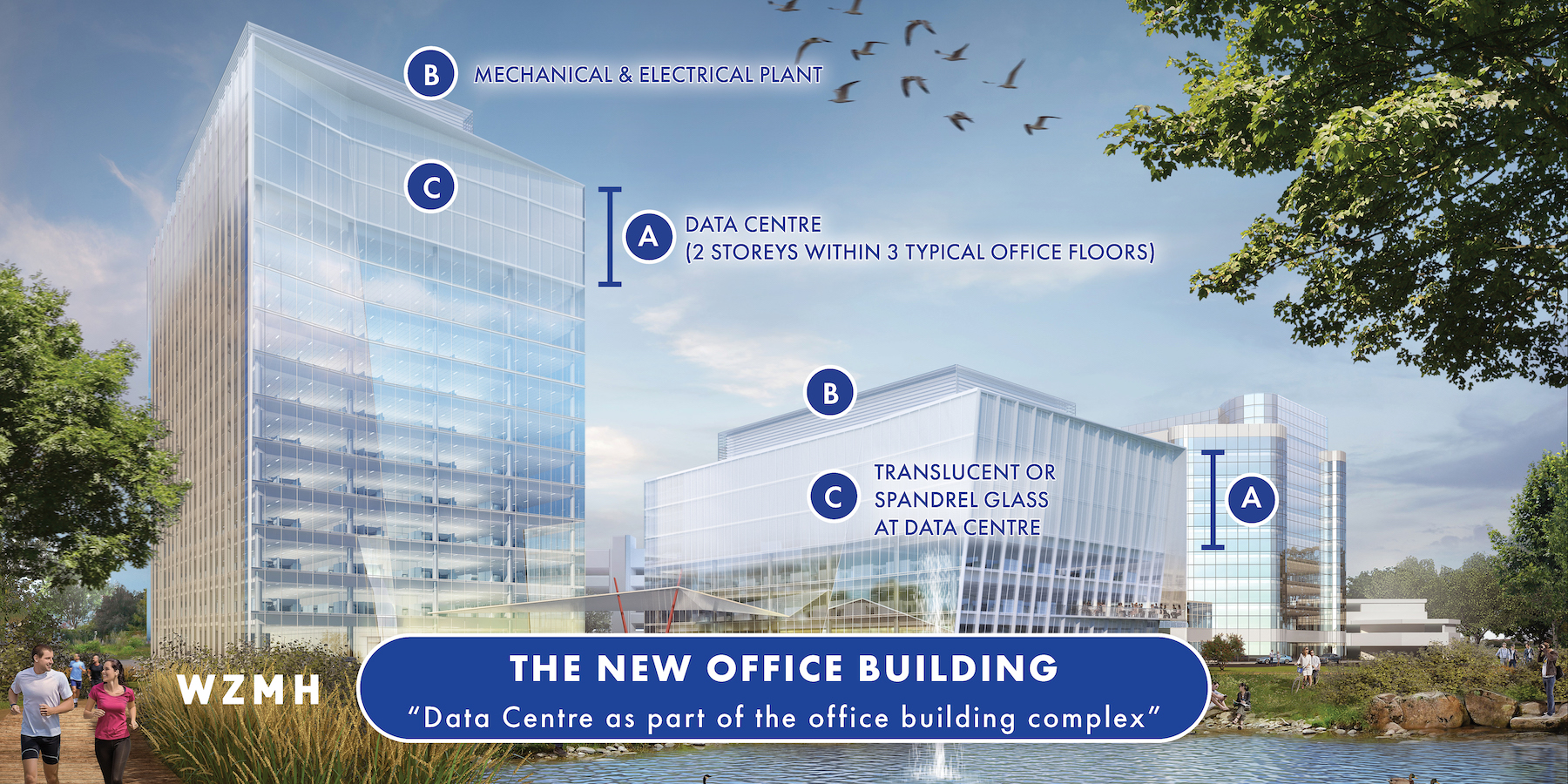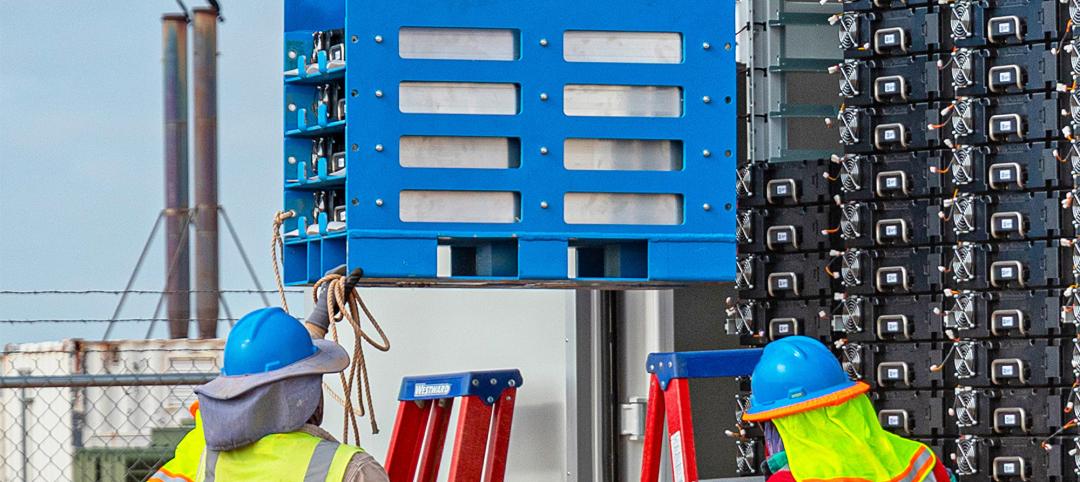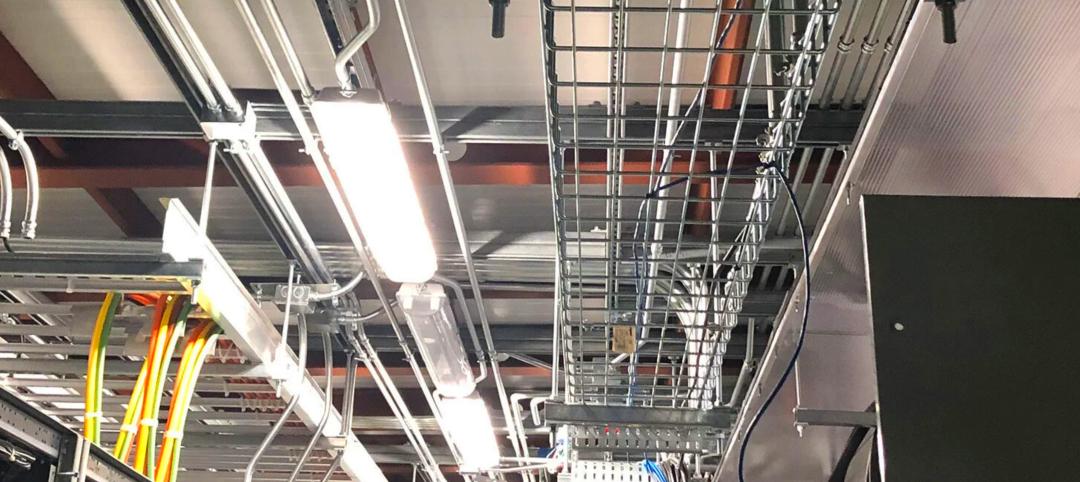Data centers are being built at a rate that could see the number of facilities double in the next decade. Their huge energy needs, left unaddressed, will pose a threat to the positive steps the built environment takes toward reducing its carbon footprint.
Toronto-based WZMH Architects has come up with a concept to harness “wasted energy” from data centers by diverting it to residences and commercial buildings that are located near the data center to form a direct current microgrid-based community.
The firm’s Innovation Lab has been conducting regular workshops on this topic with Ryerson University. And while WZMH hasn’t reached a proof-of-concept stage yet, “it wasn’t meant to,” says Zenon Radewych, a Principal with the firm. He believes, however, that it’s only a matter of time before a microgrid community is created.
“We’ve been living in a low-voltage DC [direct current] world for a long time,” he explains. The goal would be to build out the direct-current infrastructure and “push AC [alternating current] as far back as possible.” Radewych notes that DC is more compatible to green products like solar and wind, as well as to Internet of Things devices.
Here’s how the concept would work:
- Data center generators are tested monthly, but the energy from those tests isn’t used to support the facility’s electricity requirements, so it’s being wasted;
- Using DC microgrid technology and a battery storage system, the wasted energy from data centers could be harnessed to power nearby buildings;
- Buildings constructed around data centers would benefit from a free, reliable, and self-sustaining energy source. WZMH research estimates that in a data center with eight three-megawatt diesel generators that are tested for one hour per month, a DC microgrid can create energy equivalent to one day of power per week for a residential building with 125 units.
The microgrid—a localized network of electric loads and power sources—could function independently or in conjunction with a larger grid system. In WZMH’s concept, the microgrid would be an alternative power system in the building whose equipment could be energized by various energy-generating sources.
WZMH envisions the microgrid community with battery storage systems that, along with renewable energy sources and access to recycled energy from the data center, comprise the power plant for the co-located buildings within the community.
Radewych says that data centers have only scratched the surface when it comes to lowering their energy consumption. He also speculates that the data centers built nearer to residential and commercial properties would probably need to be constructed vertically because of land availability.
Related Stories
Giants 400 | Aug 22, 2023
2023 Giants 400 Report: Ranking the nation's largest architecture, engineering, and construction firms
A record 552 AEC firms submitted data for BD+C's 2023 Giants 400 Report. The final report includes 137 rankings across 25 building sectors and specialty categories.
Giants 400 | Aug 22, 2023
Top 175 Architecture Firms for 2023
Gensler, HKS, Perkins&Will, Corgan, and Perkins Eastman top the rankings of the nation's largest architecture firms for nonresidential building and multifamily housing work, as reported in Building Design+Construction's 2023 Giants 400 Report.
Market Data | Aug 1, 2023
Nonresidential construction spending increases slightly in June
National nonresidential construction spending increased 0.1% in June, according to an Associated Builders and Contractors analysis of data published today by the U.S. Census Bureau. Spending is up 18% over the past 12 months. On a seasonally adjusted annualized basis, nonresidential spending totaled $1.07 trillion in June.
Data Centers | Apr 14, 2023
JLL's data center outlook: Cloud computing, AI driving exponential growth for data center industry
According to JLL’s new Global Data Center Outlook, the mass adoption of cloud computing and artificial intelligence (AI) is driving exponential growth for the data center industry, with hyperscale and edge computing leading investor demand.
Sustainability | Apr 4, 2023
NIBS report: Decarbonizing the U.S. building sector will require massive, coordinated effort
Decarbonizing the building sector will require a massive, strategic, and coordinated effort by the public and private sectors, according to a report by the National Institute of Building Sciences (NIBS).
Energy | Mar 20, 2023
Battery energy storage market predictions are trickier than ever
Burns & McDonnell breaks down the state of battery energy storage today, from pricing concerns to alternative solutions.
Giants 400 | Feb 9, 2023
New Giants 400 download: Get the complete at-a-glance 2022 Giants 400 rankings in Excel
See how your architecture, engineering, or construction firm stacks up against the nation's AEC Giants. For more than 45 years, the editors of Building Design+Construction have surveyed the largest AEC firms in the U.S./Canada to create the annual Giants 400 report. This year, a record 519 firms participated in the Giants 400 report. The final report includes 137 rankings across 25 building sectors and specialty categories.
Data Centers | Feb 6, 2023
Modular electric rooms are the new normal
Southland Industries breaks down the prefabrication benefits of Modular Electric Rooms (MERs).
Sponsored | Resiliency | Dec 14, 2022
Flood protection: What building owners need to know to protect their properties
This course from Walter P Moore examines numerous flood protection approaches and building owner needs before delving into the flood protection process. Determining the flood resilience of a property can provide a good understanding of risk associated costs.
Data Centers | Nov 28, 2022
Data centers are a hot market—don't waste the heat!
SmithGroup's Brian Rener shares a few ways to integrate data centers in mixed-use sites, utilizing waste heat to optimize the energy demands of the buildings.
















